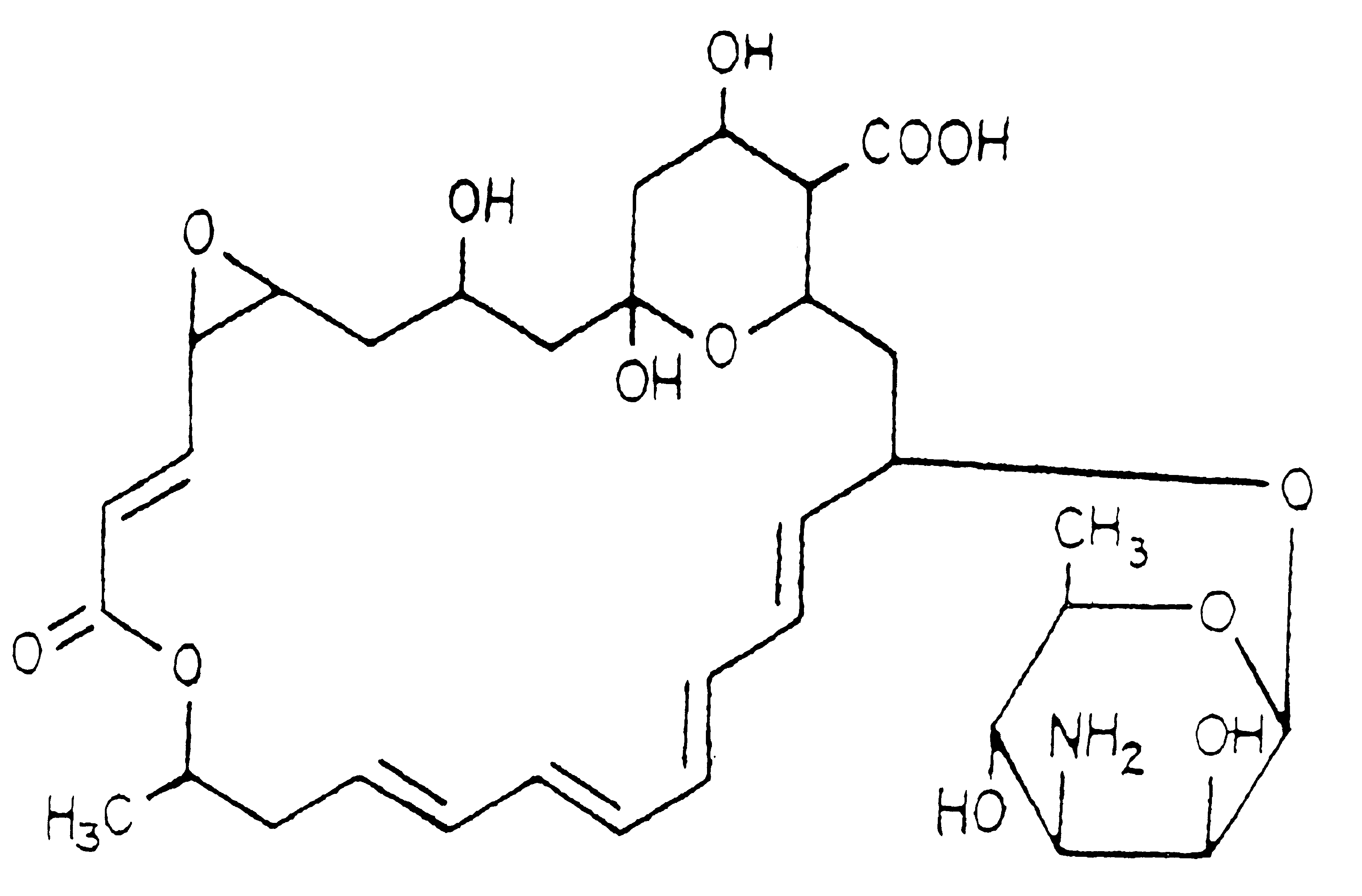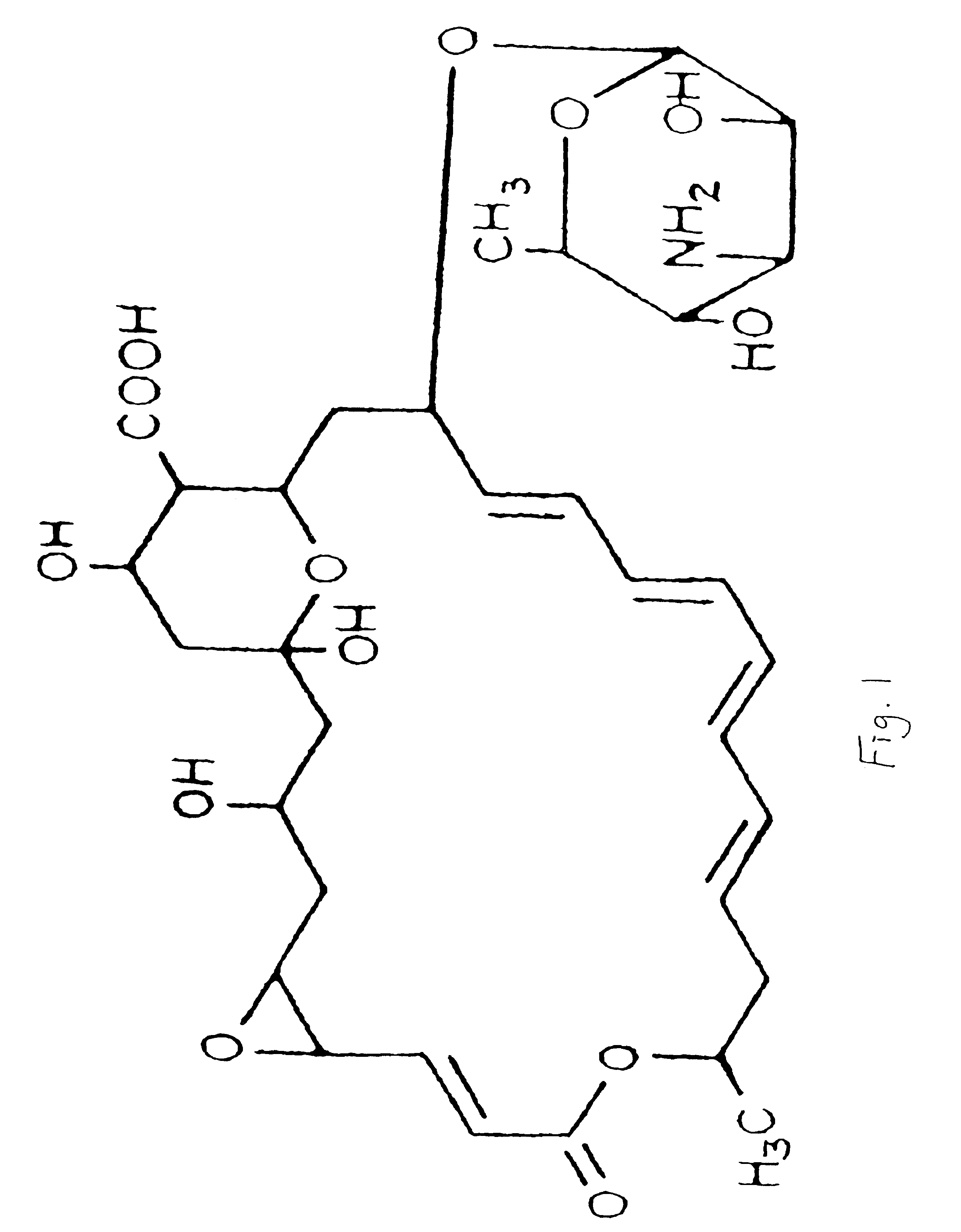Topical formulations of natamycin/pimaricin
a technology of natamycin and pimaricin, which is applied in the field of drug formulations for infectious conditions, can solve the problems of risk of systemic infection entry, side effects, and more difficult challenges for clinicians caring
- Summary
- Abstract
- Description
- Claims
- Application Information
AI Technical Summary
Benefits of technology
Problems solved by technology
Method used
Image
Examples
example 1
Topical Formulations
To design formulations of Natamycin that are acceptable for topical administration the necessary solubility / stability required is calculated and the formulations are prepared using high pressure liquid chromatographic (HPLC) techniques.
More specifically, one may (1) define the desired solubility and stability of Natamycin in various solvents relevant for topical administration and (2) enhance Natamycin's stable solubility in vehicles acceptable for topical administration, using the rational principle of cosolvency.
Calculation of the Desired Solubility. The inventors have calculated a relevant solubility range for Natamycin by extrapolation from the data obtained from in vitro susceptibility studies of various fungi, such as different strains of Candida and molds. The in vitro antifungal activity of Natamycin solubilized in a few selected solvent vehicles was evaluated using AMB as a reference solution.
Methodology. The antifungal activity of Natamycin was compared...
example 2
Preparation of Ointments, Gels, or Creams
Natamycin solubility was determined in several individual vehicles (see Table I). Briefly, a known amount of the drug, as a powder (different lots of purified drug were obtained from Gist-Brocades N.V., Netherlands, and from Sigma Chemical Company, St Louis, Mo.), was equilibrated in the respective solvent at RT (22° C.) over 5 min to 4 hours. An aliquot was then removed and diluted in MeOH prior to HPLC at predetermined times. Based on the Natamycin solubility in these particular vehicles, the inventors attempted to enhance the solubility by mixing different solvents according to the principle of cosolvency (Spiegel and Noseworthy, 1963; Yalkowsky and Roseman, 1981). Several different solvent systems were evaluated relative to the above estimates of necessary solubility to arrive at a clinically relevant optimal stock formulation. This stock formula is then diluted with a “final solvent” to yield the complete working formulation with a Natam...
example 3
Sensitive Detection System
An accurate and sensitive detection system for detecting low concentrations of Natamycin in solution in protein-free mixtures has also been developed by the present inventors. This is an HPLC assay that utilizes absorbance detection with a variable wave length detector operating in the u.v. spectrum at 293 nm, a value chosen on the basis of the inherent absorption maxima of the Natamycin molecule (Raab, 1972).
A liquid chromatographic system equipped with an LDC 4000 multi-solvent delivery system™ and a Waters™ system 717plus Autoinjector™ was used to detect low concentrations of Natamycin. The absorbance detector was a LDC 3100 variable wave length detector in sequence with an LDC model CI 4100 fully computerized integrator. The column used was a Whatman EQC 10 μI 125A™ C18 column (4.6 mm i.d.×21.6 cm) (Whatman Inc. Clifton, N.J.). The mobile phase system was an isocratic mixture of MeOH (47% v / v), tetrahydrofuran (2% v / v), and NH4-acetate (0.1% w / v) made u...
PUM
| Property | Measurement | Unit |
|---|---|---|
| concentrations | aaaaa | aaaaa |
| concentrations | aaaaa | aaaaa |
| miscible | aaaaa | aaaaa |
Abstract
Description
Claims
Application Information
 Login to View More
Login to View More - R&D
- Intellectual Property
- Life Sciences
- Materials
- Tech Scout
- Unparalleled Data Quality
- Higher Quality Content
- 60% Fewer Hallucinations
Browse by: Latest US Patents, China's latest patents, Technical Efficacy Thesaurus, Application Domain, Technology Topic, Popular Technical Reports.
© 2025 PatSnap. All rights reserved.Legal|Privacy policy|Modern Slavery Act Transparency Statement|Sitemap|About US| Contact US: help@patsnap.com


